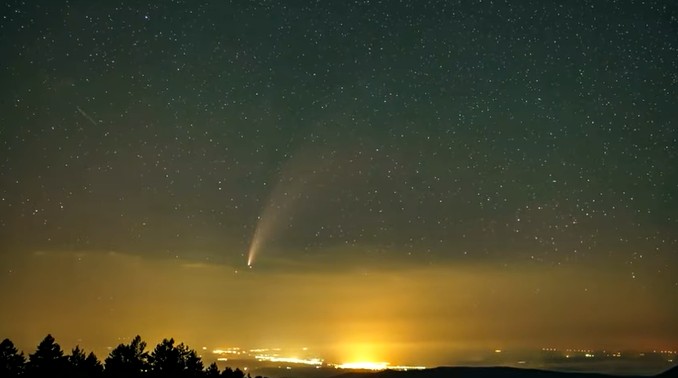According to the forecasts, the unexpectedly appeared and discovered comet C/2023 P1 (Nisimura) can be seen with the naked eye in the northern sky in September, they wrote on the csillaszat.hu news portal.
The new comet was discovered on August 12, 2023, by a 72-year-old Japanese comet and nova discoverer, amateur astronomer Hideo Nisimura, at his observatory on a tea plantation called Gomjo near the city of Kakegawa.
Since the 11-magnitude apparent brightness at the time of discovery is considered high for today’s smaller telescopes, many amateur astronomers observed and confirmed the discovery after the announcement by the National Observatory of Japan, the article reads.
Many observations quickly made it possible to determine the orbit of the celestial body, which confirmed that it was a previously unknown comet.
The comet, which belongs to the Solar System, so it did not come near the Sun from the distant regions of the Solar System, will be close to the Sun on September 18. This means it will be closer to the Sun than Mercury, potentially making it a bright comet.
According to the article, the comet’s faint plume can already be seen in recent, long-exposure images taken from places that are sufficiently dark and free of light pollution. Its gas coma is green in color, which comes from the diatomic carbon molecule.
The comet’s apparent brightness can reach three magnitudes during its approach to the sun in September, so it could even be observed with the naked eye if it did not appear at a very small angular distance from the Sun. The comet will then be more visible in the brightening, twilight sky. According to astronomers, it will be more worthwhile to try to observe it a week before it approaches the sun, around September 10, when it will be fainter but easier to detect.
The comet will be closest to Earth on September 13, when it will be 127.5 million kilometers from our planet, they wrote on the csillaszat.hu portal.
(MTI)


















